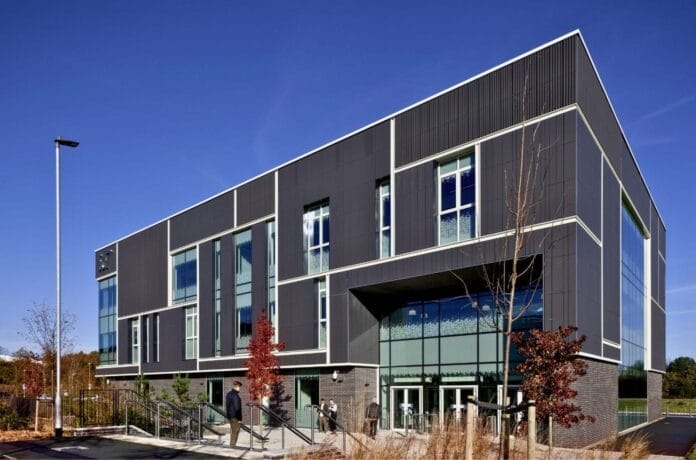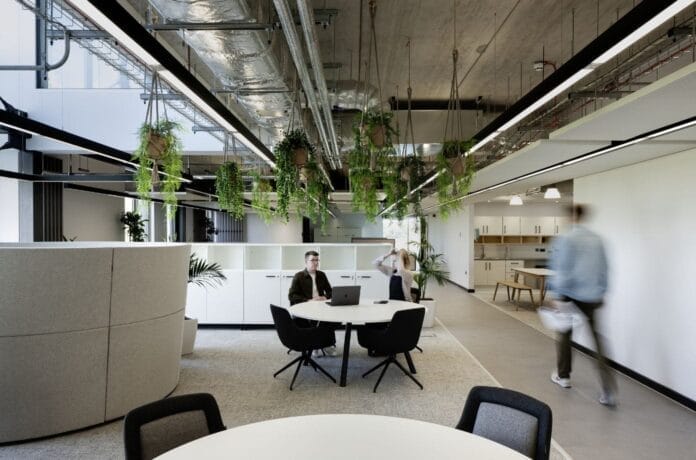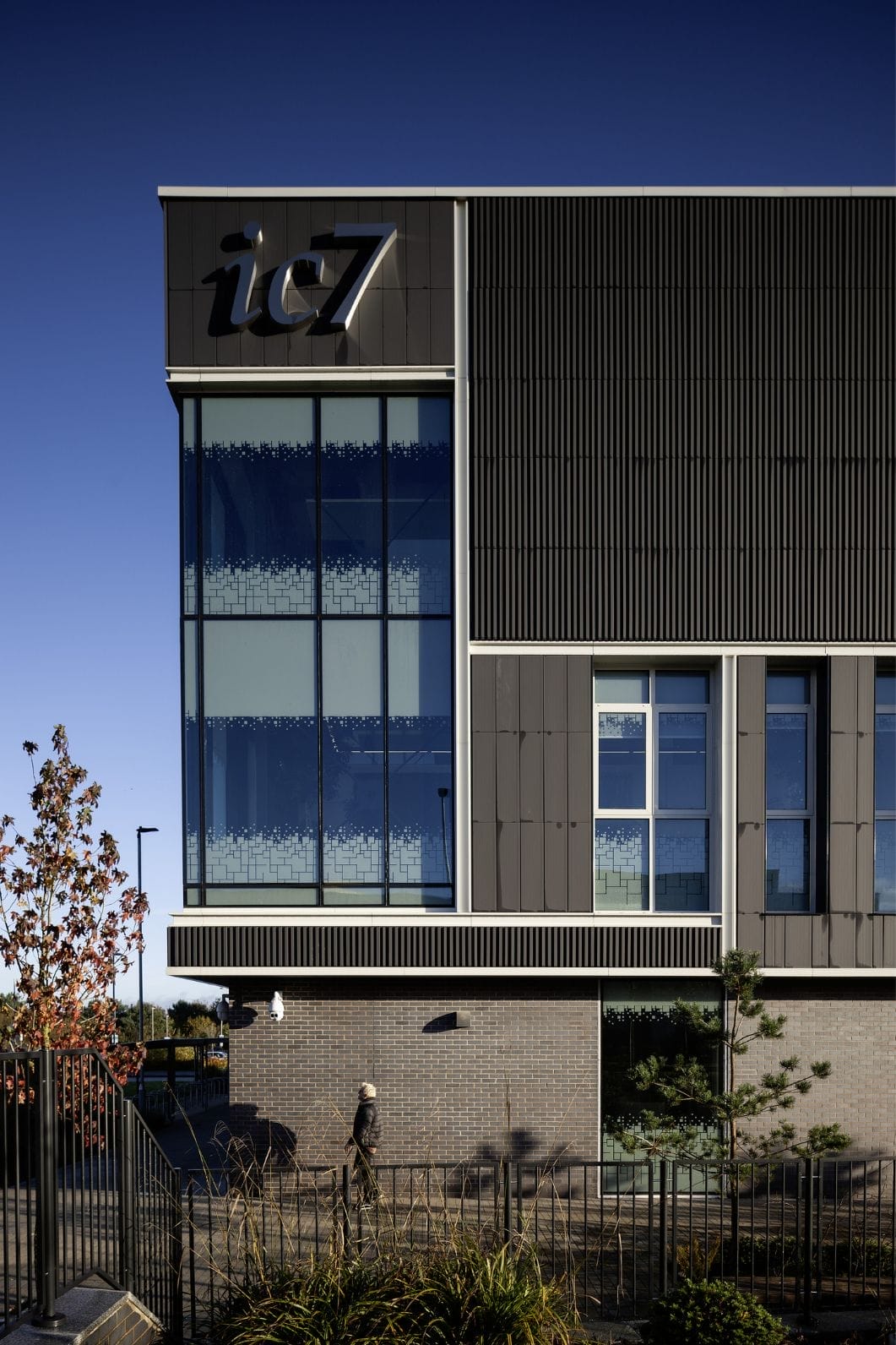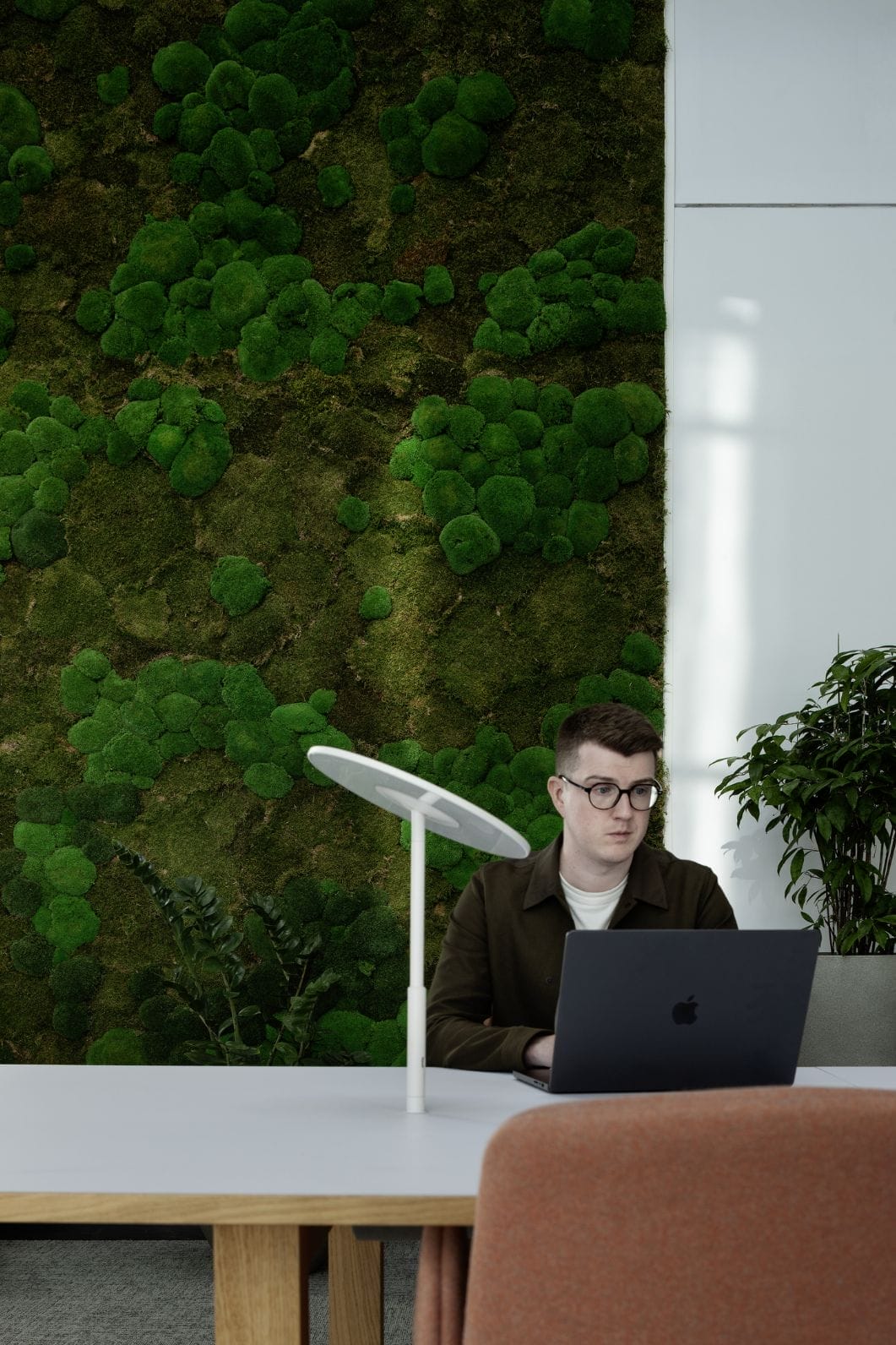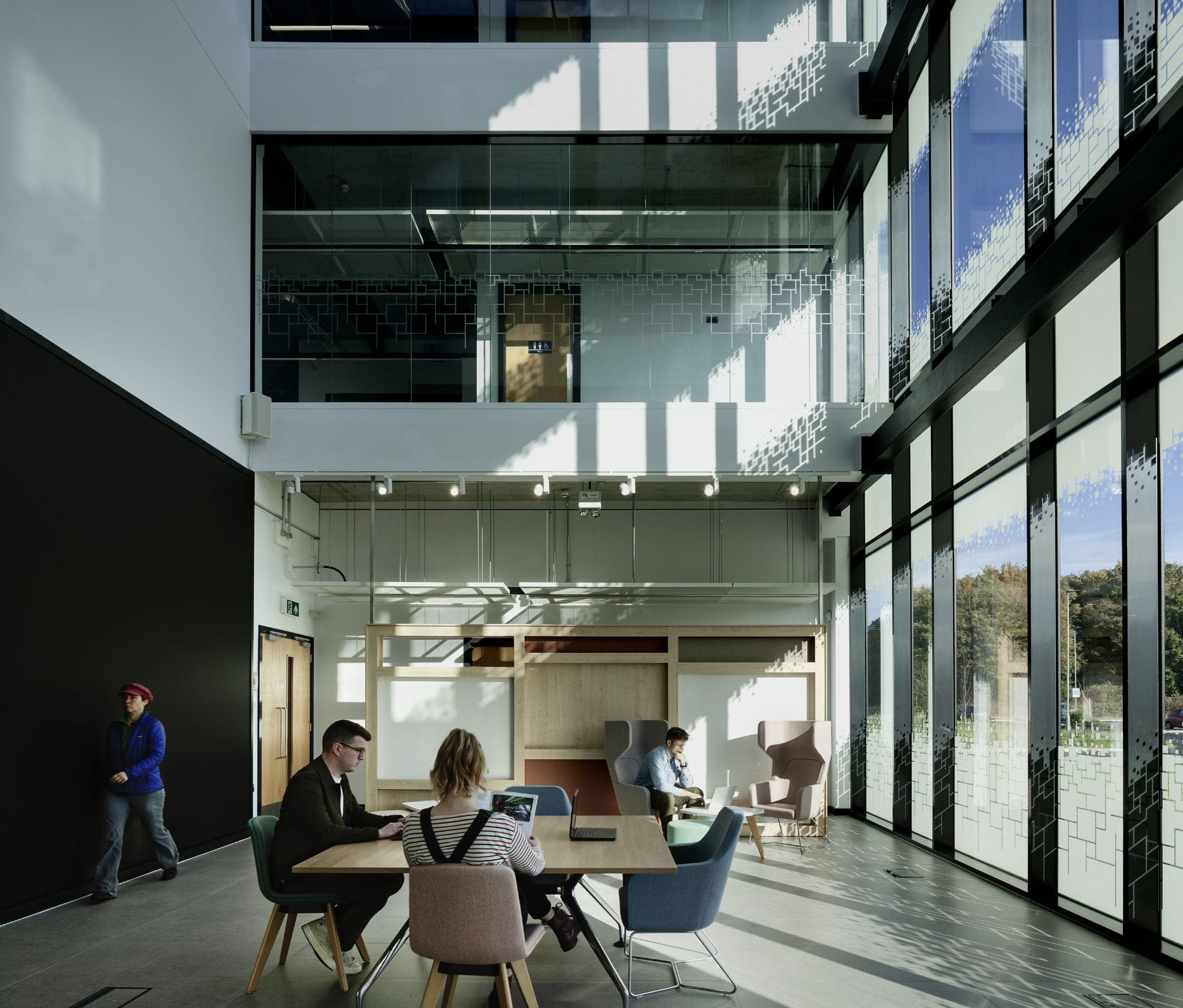
Occupying a prominent site on the Keele University Science and Innovation Park, the Digital Research and Enterprise Centre (DREC) showcases the University’s world-leading research and teaching on digital themes and technology, acting as a demonstrator for Smart Energy, Cities and Transport and promoting the highest sustainability standards.
Design Approach
The new Keele University Innovation Centre 7 is located in a 4,500 sq m building on the Keele University Science and Innovation Park, showcasing world-leading researching and teaching on digital themes and technology.
Academics, researchers and businesses will co-locate in shared spaces which facilitates the exchange of ideas in a collaborative, interdisciplinary environment, aided by a core team of ‘Digital Experts’ who will provide the skills and knowledge to support users to develop their businesses and research themes. This will encourage local economic growth of both large global businesses and small and medium sized enterprises, improving local healthcare and putting the region at the heart of the UK’s transition to lower carbon economy.
HLM have worked closely with the client from Stage 0 to develop a robust Strategic Brief for the project, helping to define user requirements, brief, site and feasibility. Our digital engagement tool, HLM Insight, was sent to all staff in the Faculty so that we could understand their personal preferences for the quality of the built environment under several key physiological and psychological criteria.
The minimum requirement for the ERDF application was to achieve a BREEAM rating of ‘Excellent’ and HLM Greenbuild were therefore appointed to carry out a passive design analysis on emerging designs to identify CO2 emissions savings through the incorporation of a thermally efficient building fabric, glazing with solar control, external shading and the utilisation of natural ventilation during the summer to reduce cooling loads. Parametric modelling was used to optimise glazing areas for each façade of the building, assessing daylight access, thermal comfort and annual energy demand of the building. This resulted in an 18% reduction in energy use purely through good, passive design measures.
To further this sustainable approach the building will be fully electric, connected to the University’s own solar and wind energy farm to create a building that is anticipated to be zero carbon in operation.

